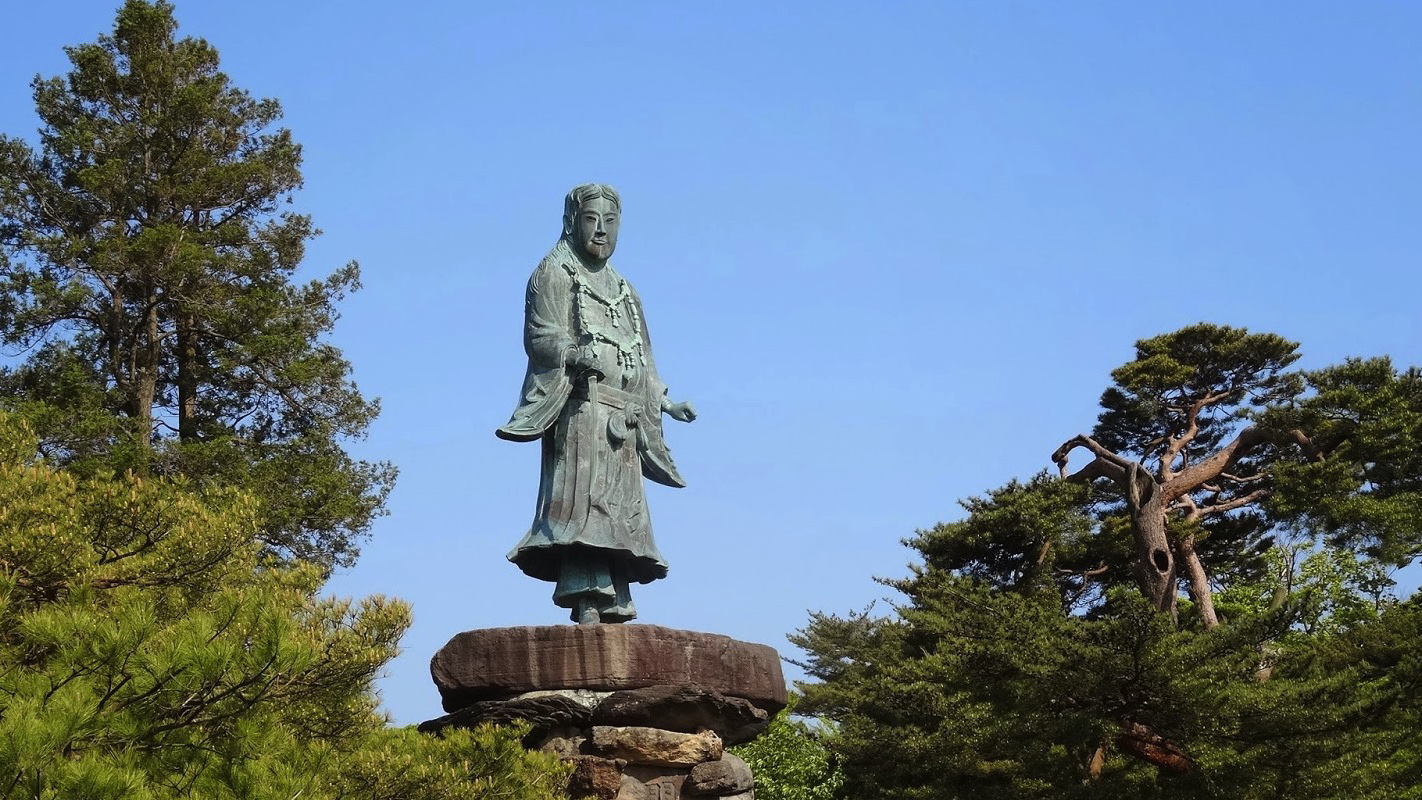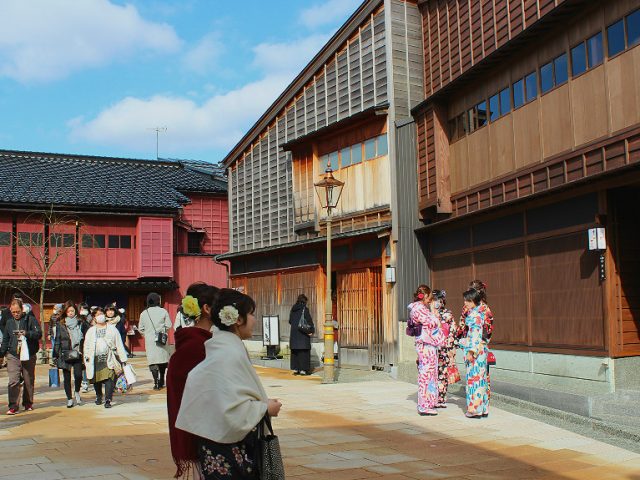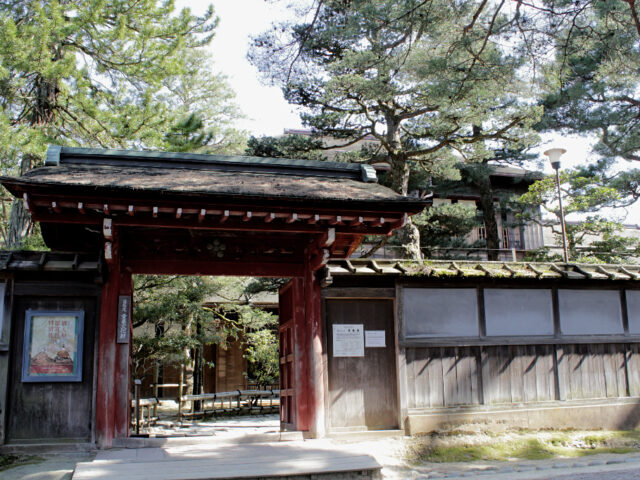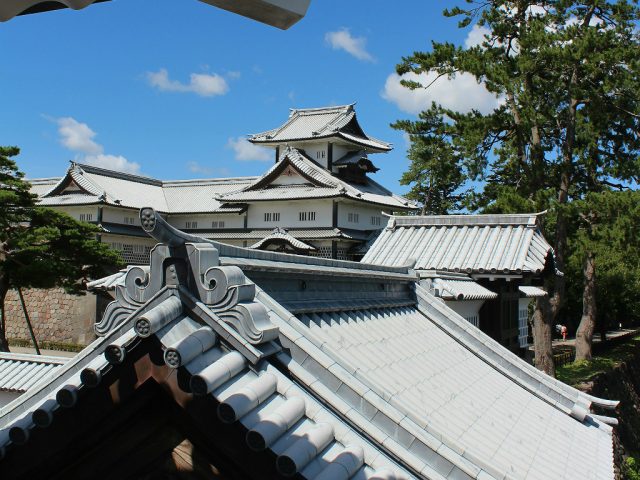The Side of Kenrokuen Garden You Haven’t Seen
Is Kenrokuen Garden Worth Visiting…?
…Especially if it’s not “high season”? Yes! Kenrokuen’s green and subtle “off-season” beauty is what ranks it among the “Three Great Gardens of Japan.” Grab a garden map with your ticket and follow this route anytime of the year.
- anticipatory ascent
- tea houses, pagodas & waterfalls
- Japan’s oldest fountain
- delicately carved stone bridge
- overlooking the pond that overlooks the city
- “Turtle Island”
- the iconic lantern, Kotoji-toro
- the grand panorama
- “Flying Geese” Bridge
- meeting the Seven Gods
- a tree that walks on its roots
- the statue all birds avoid…
- Kenrokuen’s most famous bridge
- an island of birth, marriage, and death
- “mountain slope hill”
What Almost Everyone Misses…
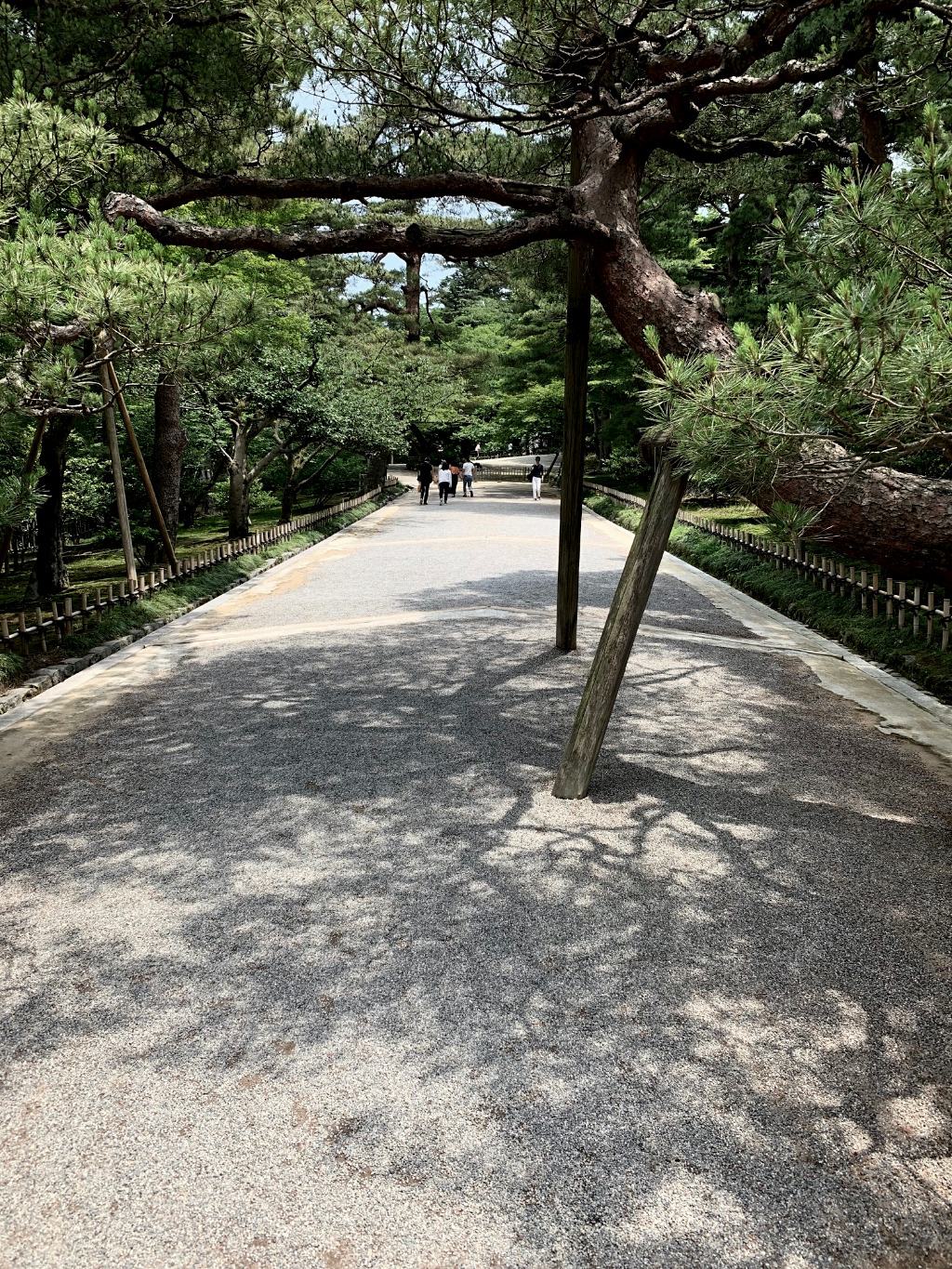
1. Mayumizaka Entrance, 真弓坂
Avoid the worst of Kenrokuen’s high traffic by taking any other entrance than the one facing the castle! Mayumi Rise is especially close, directly diagonal of the 21st Century Museum.
The garden’s position on a hill isn’t simply a result of natural geography! The slopes that rise up to the garden proper are actually part of its design. The path ahead blocks visitors’ views, hiding the garden from their view. However, this builds anticipation for what’s to come and what’s yet to be seen.
MORE NEARBY…
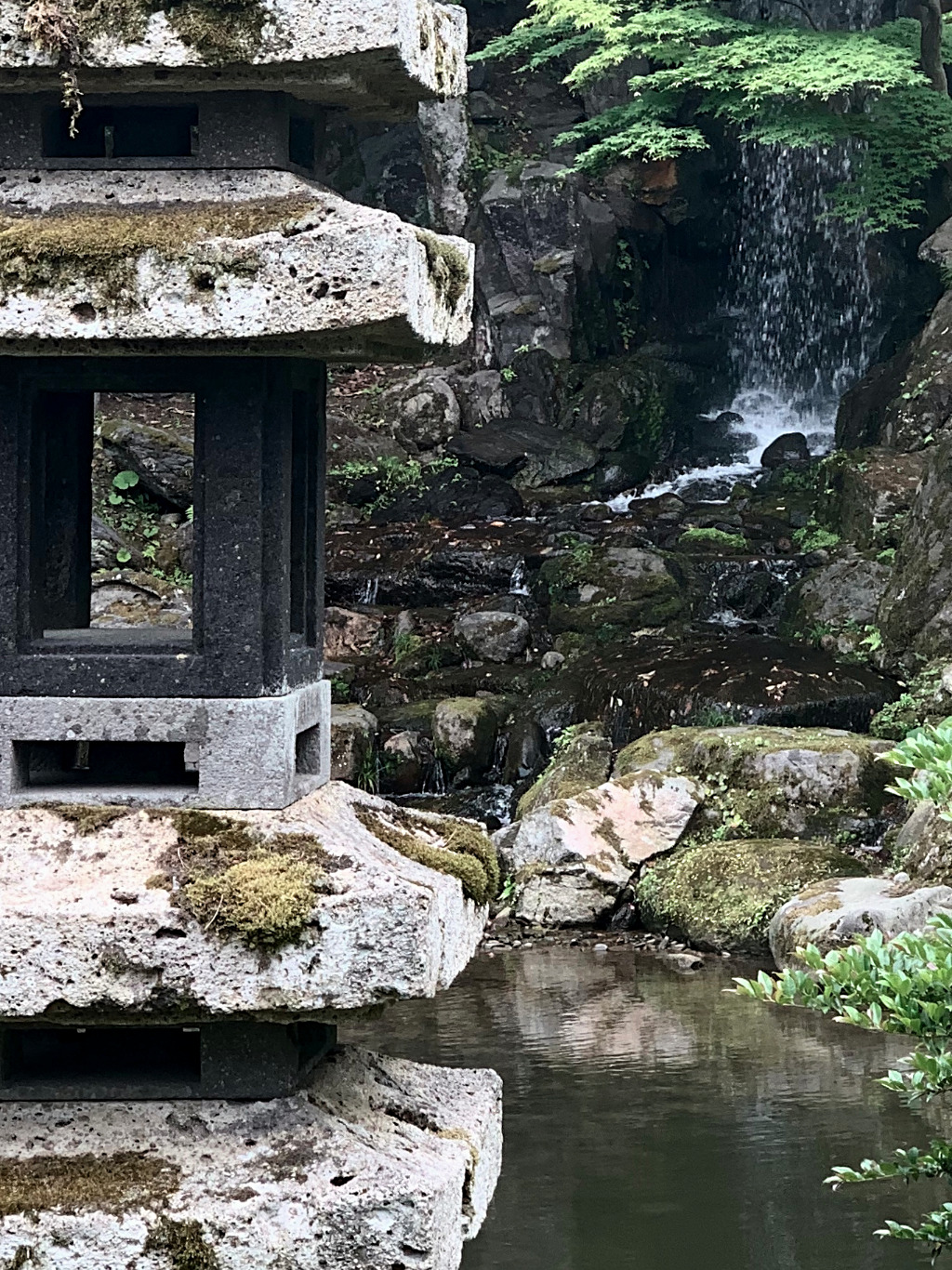
2. Hisago-ike Pond (瓢池), Sea Stone Pagoda (海石搭), & Midori Waterfall (翠滝)
Once called “The Lotus Pond Garden,” this pond and the surrounding area were the beginnings of what has become Kenrokuen Garden Park today. The pond itself is often remarked for its gourd-like shape.
The uniquely shaped stone pagoda is believed to be a gift from Toyotomi Hideyoshi to Kanazawa’s local lord, Toshiie Maeda.
The moderately sized Midori Waterfall is a rarity among Japanese gardens, making it one of the more appealing aspects for Japanese visitors. The branches of a maple hang deliberately in front of the waterfall, adding depth and character to the view.
MORE ON KANAZAWA HISTORY…
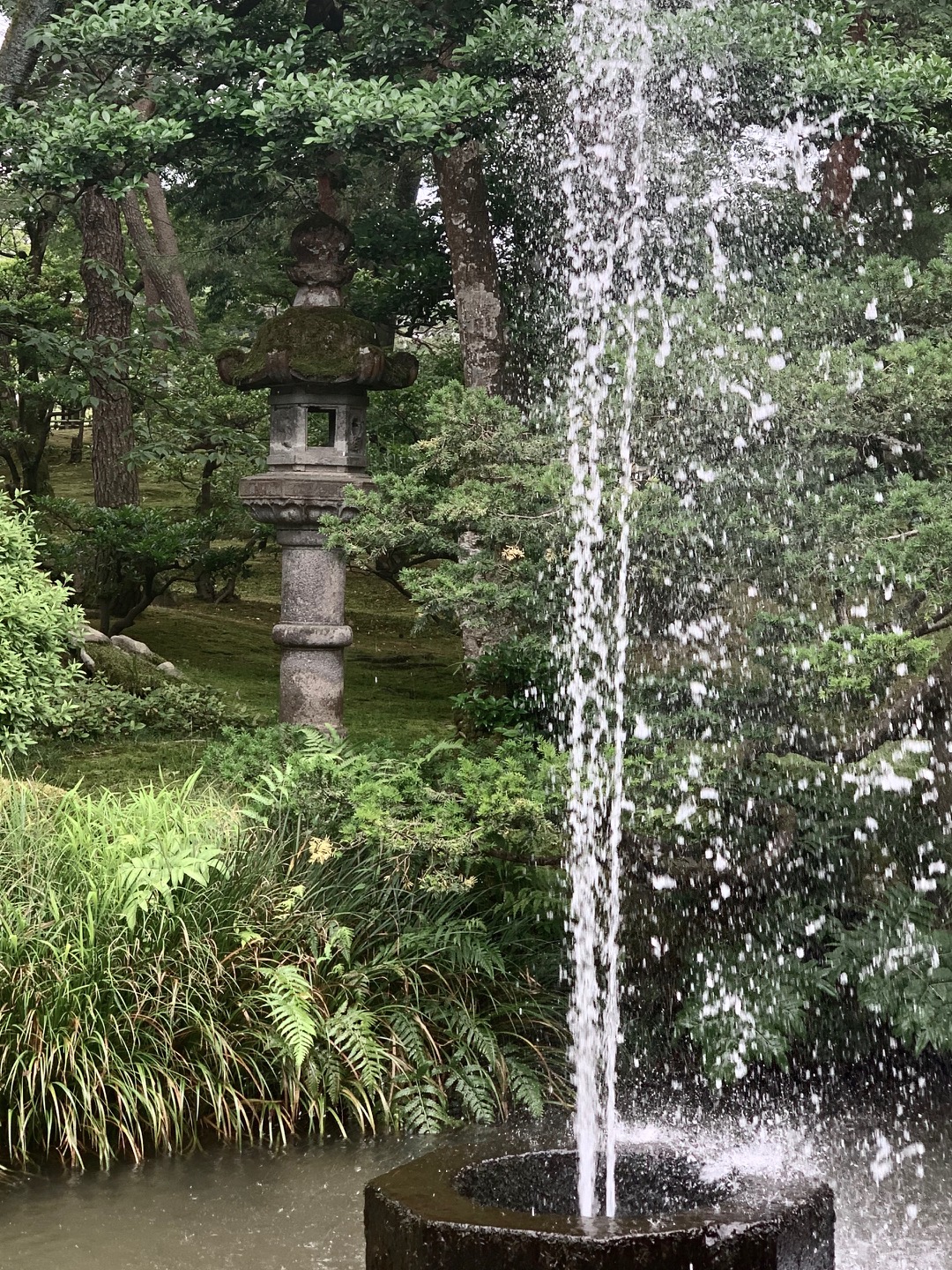
3. The Fountain, 噴水
This fountain has no special name, being the very first in Japan. It runs entirely on the pressure created by the level change of the nearby Sai River. The fountain’s location is directly across from the garden’s birthplace, where it began as a significantly smaller private garden for the local ruling lords.
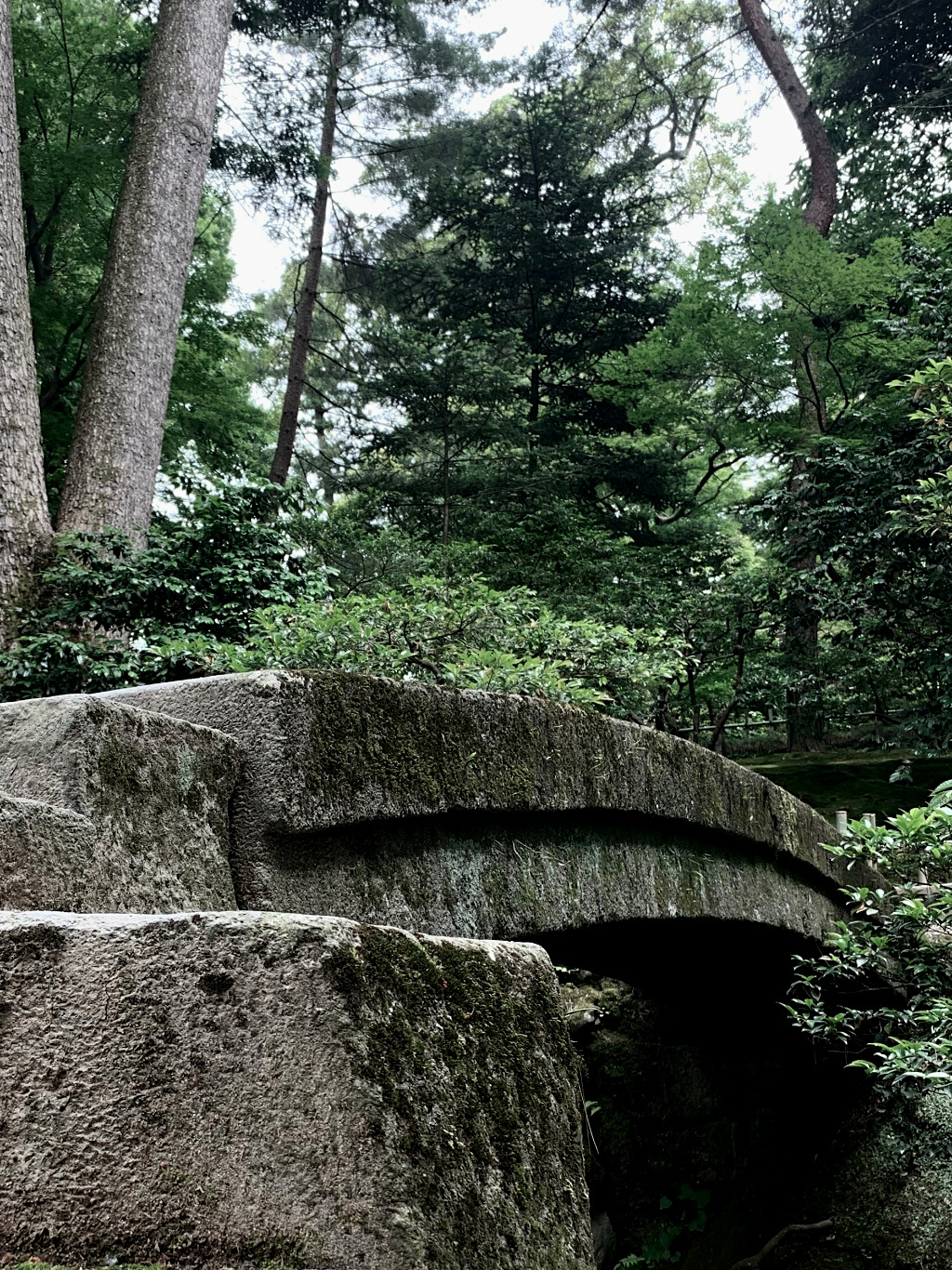
4. Komon-bashi Bridge, 黄門橋
Take this bridge to the west, but before crossing, also take a look. The design of this single slab of stone looks like two, one larger slab stacked on one smaller. This gives the illusion of an even smaller bridge, making it appear more delicate and appropriate to the garden surroundings.
The garden shares one other bridge like this one near the Kotoji-toro Lantern, further along our path.
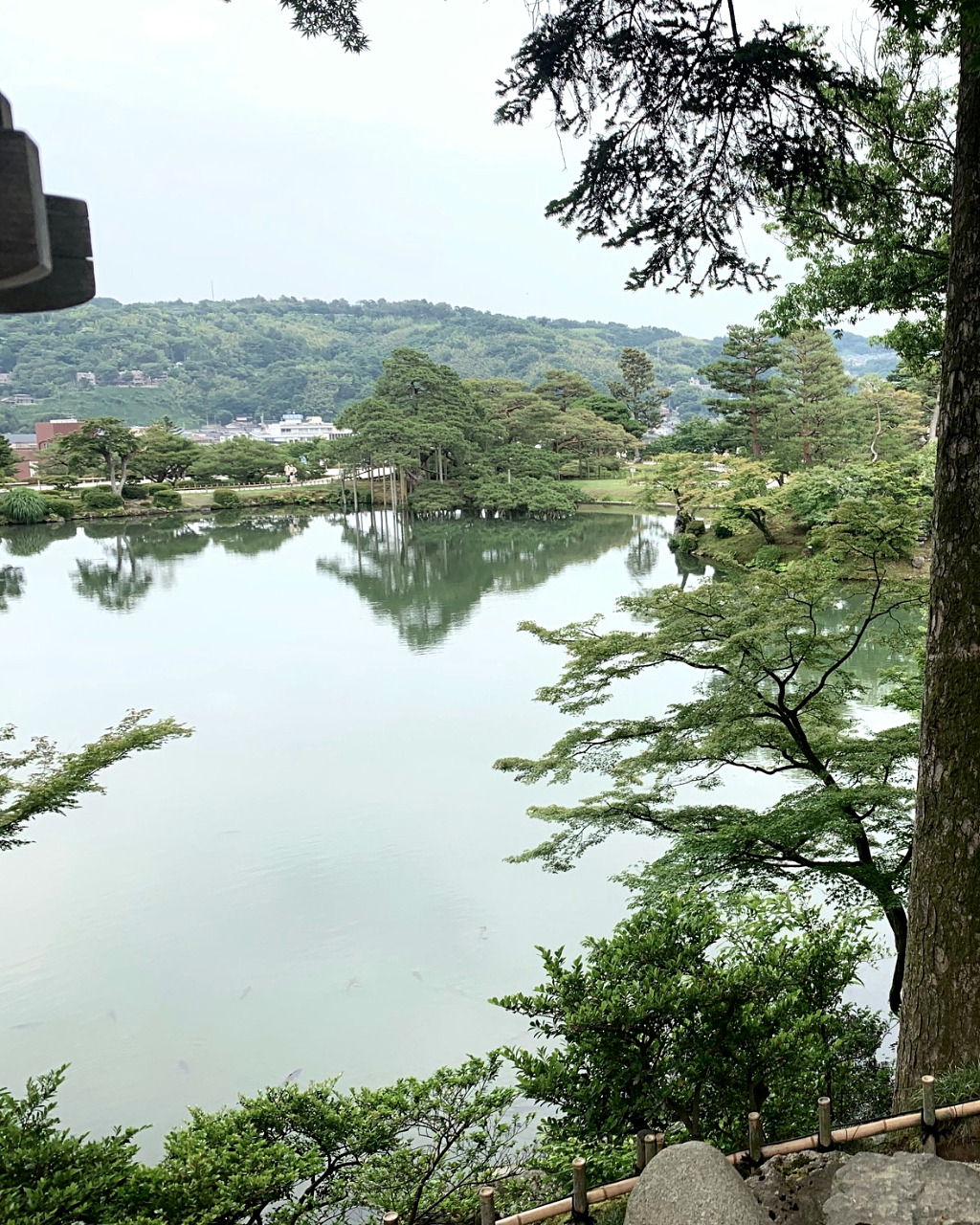
5. Sazae-yama (栄螺山) and the view of Kasumi-ga-ike Pond (霞が池)
Spiral up the stairs of the tiny but tall hill called Sazaeyama. At the top is an enclosed stone shrine and wooden parasol, as well as a lovely view of the Kasumi-ga-ike Pond below. Coming back down on the south side, the koi fish gather near the water’s edge. You can often spot turtles and waterfowl here as well.
MORE VIEWS OF NATURE…
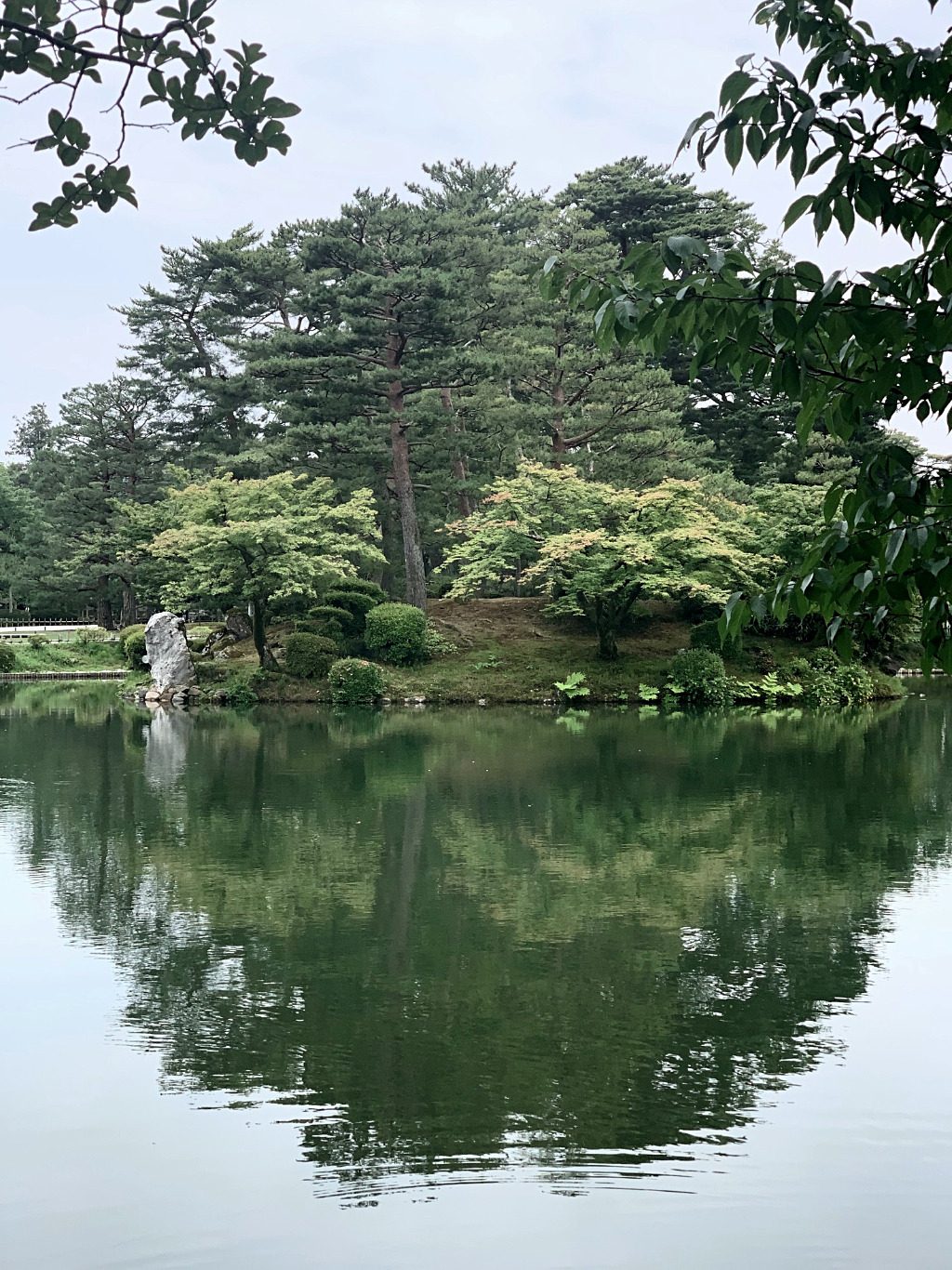
6. Kasumi-ga-ike Pond East Bank: View of Horai-jima “Turtle” Island, 蓬萊島
This spot is not on the garden map, but can be easily found walking along Kasumi-ga-ike’s east side. The bench below the Japanese maple affords a view of Horai-jima. This island in the middle of the pond is often called “Turtle Island” for its round shape. The giant rock on the south side is its head, and the small pagoda on the north, its tail.
MORE VIEWS WITH WATER…
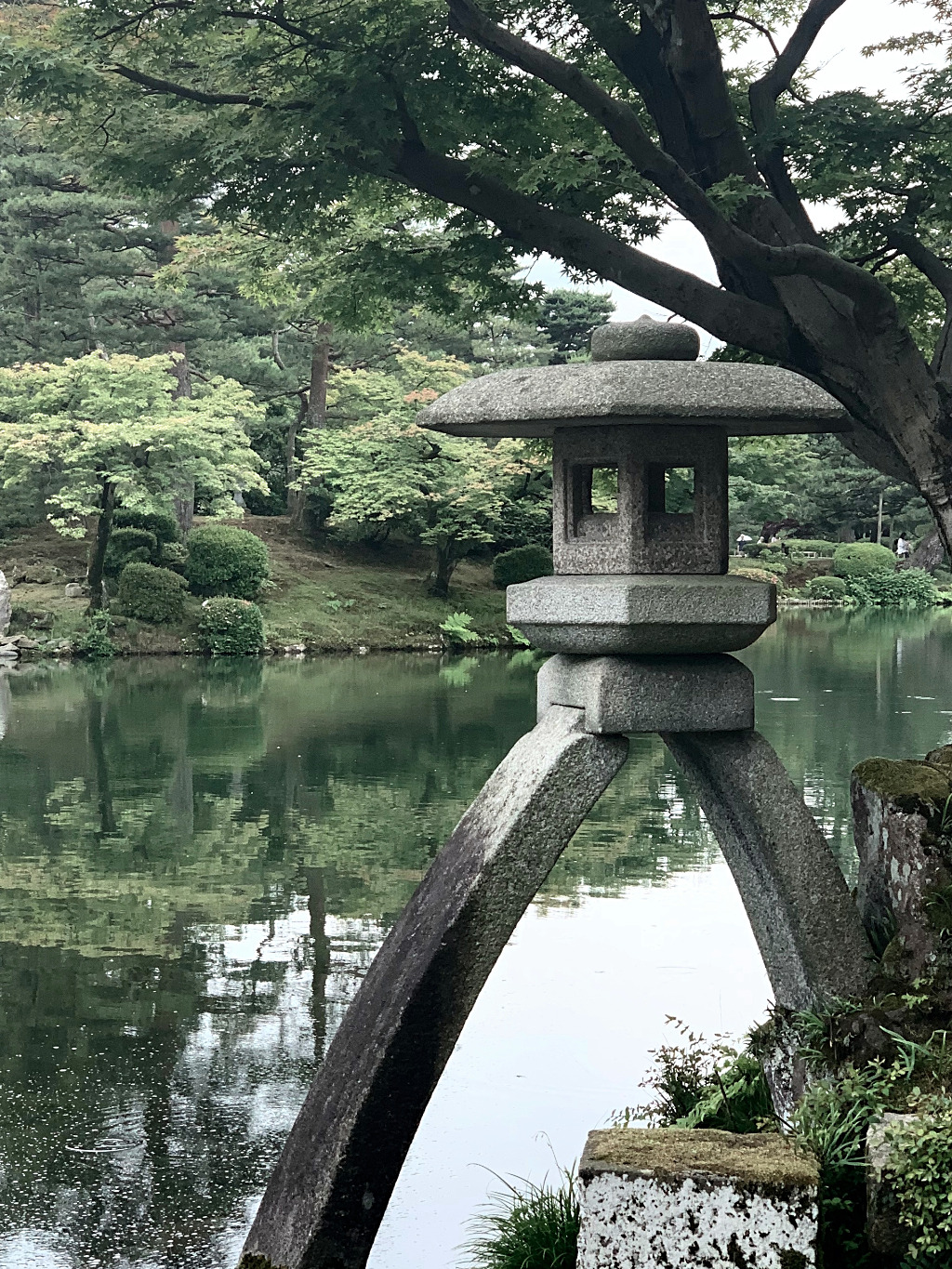
7. Kotoji-toro Lantern, 徽軫灯籠
This iconic stone lantern is the symbol of Kenrokuen Garden Park and is also often a symbol of Kanazawa. It’s remarkable for it’s distinct shape, especially its uneven legs.
Have you ever seen a koto, or “Japanese harp”? Its strings are held up tightly on specially shaped bridges. It’s these bridges that the Kotoji-toro Lantern is named after, as its legs are shaped the same way. When one of its legs broke, it was left unrepaired in a state of “imperfect beauty.”
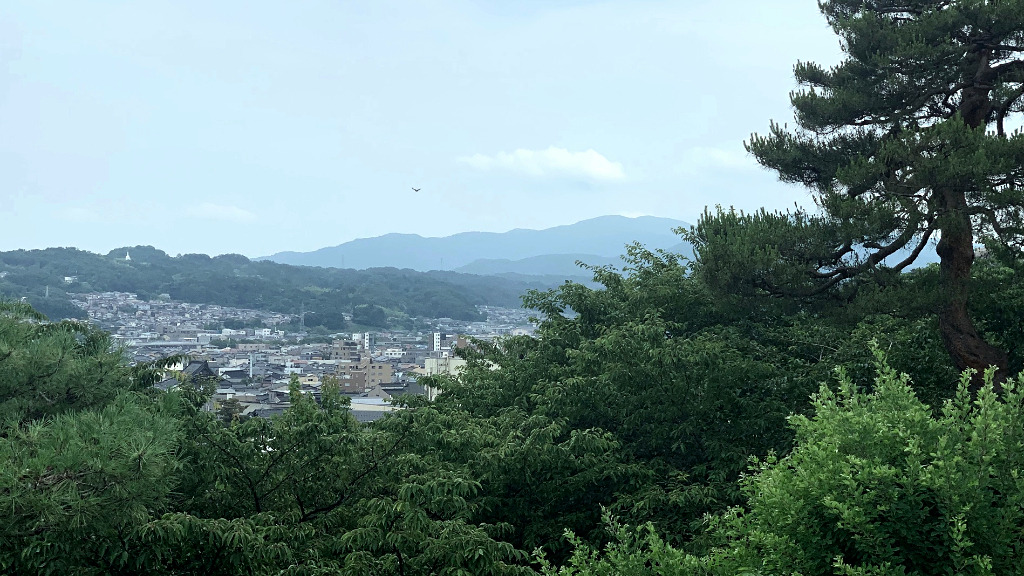
8. Panoramic Viewpoint, 眺望台
Over the southern side of Kenrokuen is a wide view of the city and sprawling green mountains. In the distance, a brilliantly white Buddhist stupa can be seen against the green mountain side along the Utatsu Mountain Range. This is one of only ten throughout Japan that were donated by India’s first prime minister in the mid-20th Century.
MORE SPIRITUAL CONNECTIONS…
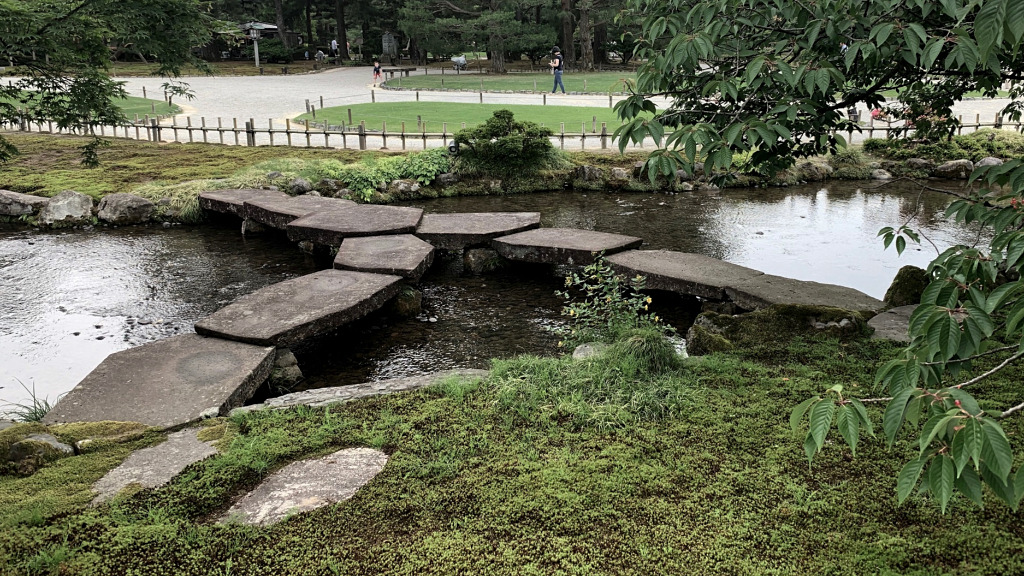
9. Ganko-bashi, “Flying Geese Bridge,” 雁行橋
These carefully placed stones make a split bridge in the shape of a flying flock of geese. The bridge is also often remarked for looking like the character 入, meaning “to enter,” giving a feeling of invitation to this area of the garden. It’s also sometimes called the “turtle bridge” for the shell-like shapes of the individual stones.
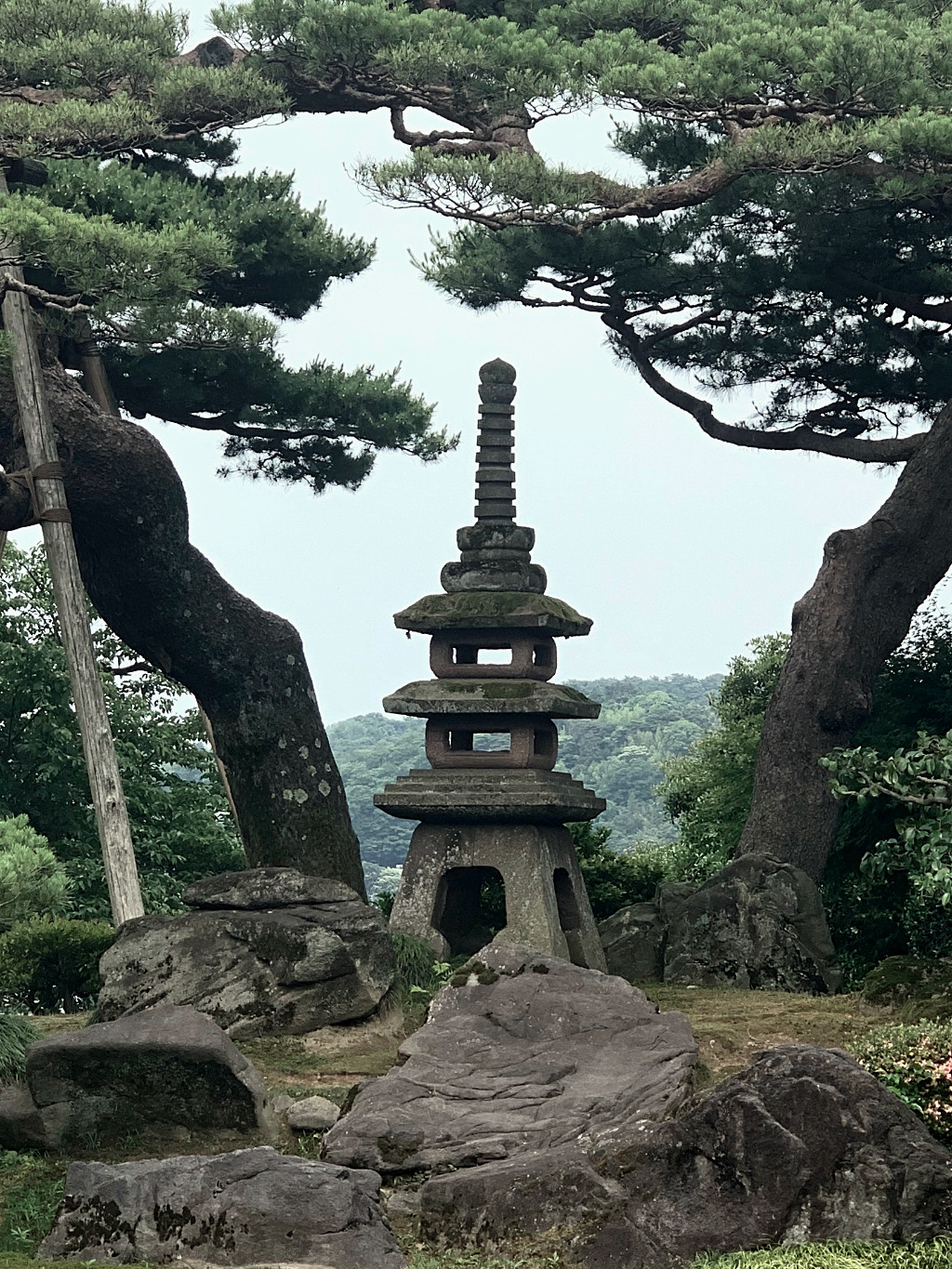
10. The Seven Gods of Fortune, 七福神山
This area was once a separate, private garden of the Takezawa Palace, the royal guest house for dignitaries and aristocrats visiting Kanazawa Castle. The palace was reconstructed as a portion of the nearby Seisonkaku Villa, and the garden here remains as part of the larger Kenrokuen Garden Park.
The seven largest natural stones represent the Seven Fortune Gods of Japanese mythology.
MORE ROYAL GARDENS…

11. The Neagari Pine, 値上松
This large pine tree’s full name, Neagari-no-matsu, means “raised roots pine,” for obvious reasons. The tree was planted on a high mount of soil. Once grown, much of the soil was removed from the upper areas of the roots, exposing them to the air and allowing them to develop bark. The result looks like the legs of an octopus, suspending the trunk of the tree above the ground.
MORE ON FORESTS & TREES…

12. The Meiji Monument, 明治記念之標
The patina statue is the figure of Yamato Takeru no Mikoto, a legendary figure of Japanese mythology on par with King Arthur. The figure honors the lives lost during the Satsuma Rebellion (depicted in the Tom Cruise movie, The Last Samurai).
However, it shares some level of fame today as the subject of an Ig Nobel Prize in Chemistry. Kanazawa University Professor Yukio Hirose discovered that a particular metal in the statue prevents birds from defiling it.
MORE ODDITIES…
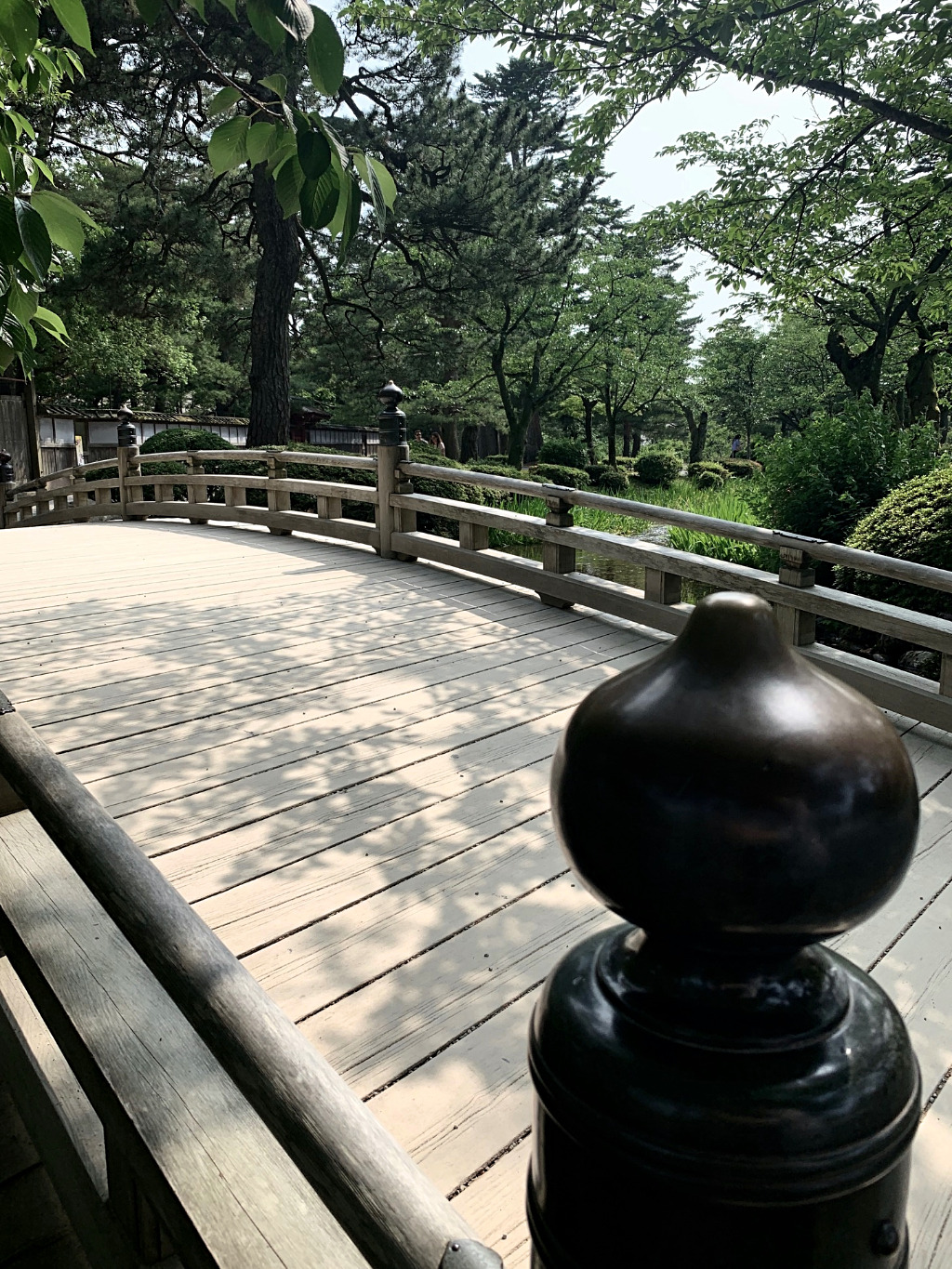
13. Flower-Viewing Bridge, 花見橋
The ancient wooden “flower-viewing bridge” is one of the most photographed areas of the garden, as is no surprise. In spring, cherry trees frame the gentle slope of light wood, and in summer, the meandering creek bears iris leaves and purple flowers along its banks.
Almost anytime of the year, the water is bordered by verdant grass and inhabited by various water fowl.
MORE ABOUT…
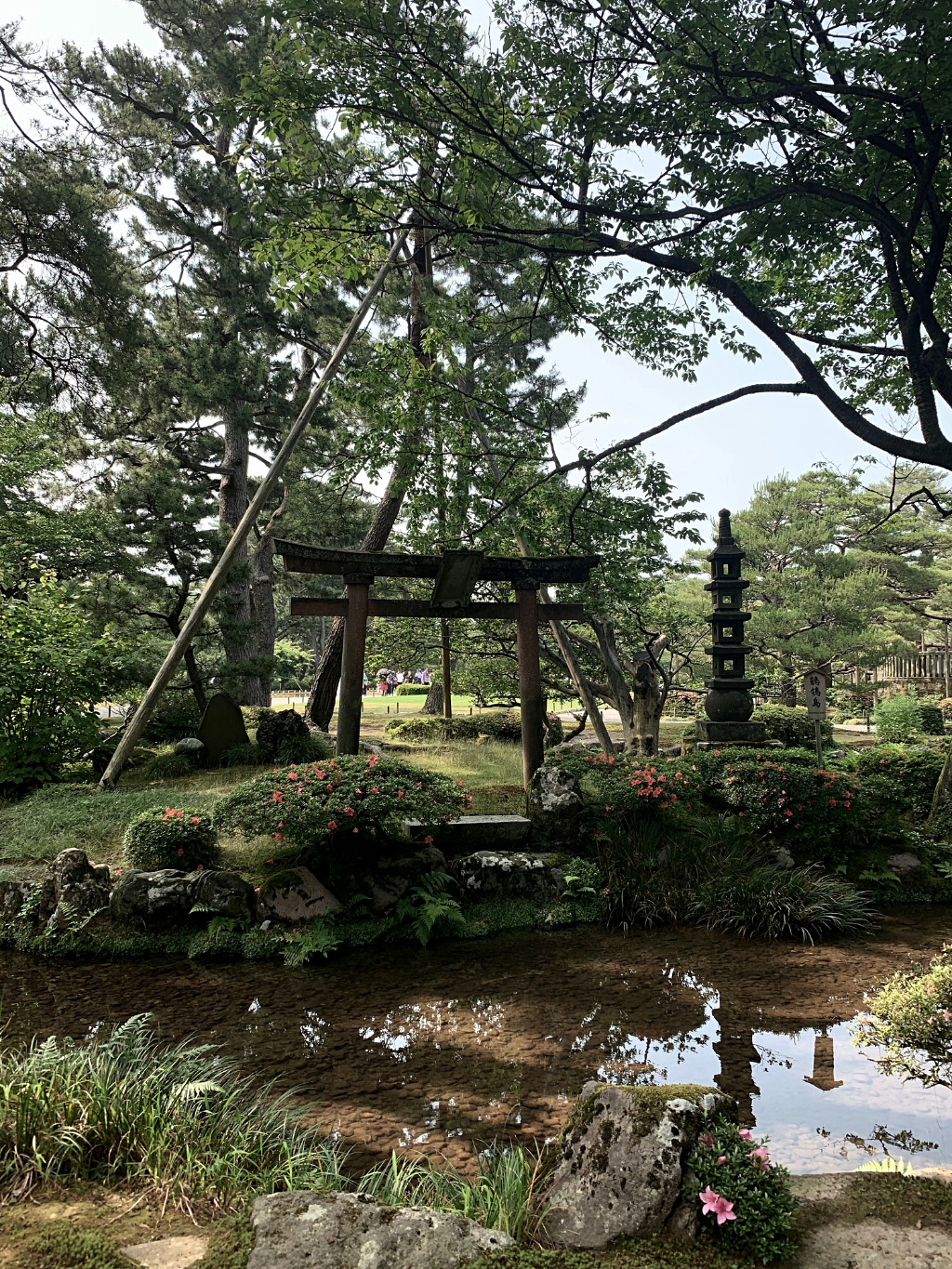
14. Wagtail Island, 鶺鴒島
A stone torii gate prominently marks this small landmass along one of the eastern waterways. The island possesses peculiarly shaped stones, intertwined pine trees, and a pagoda, which represent birth, marriage, and death, respectively. It takes the name Sekirei from the wagtail bird, who is said to have taught the gods, Izanami and Izanagi, how to conceive. (Shake your tailfeather…)
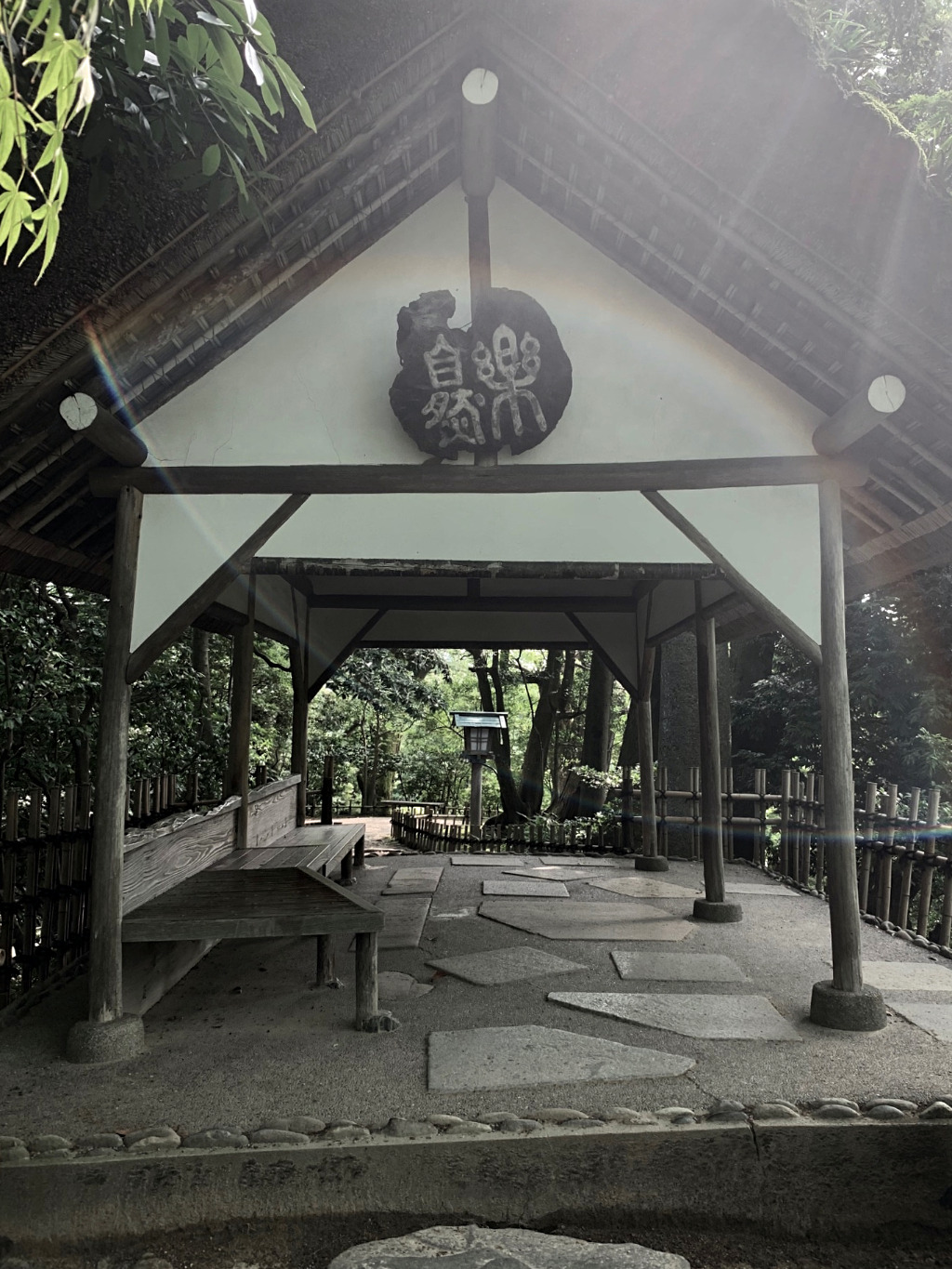
15. Yamazaki Hill, 山崎山
A standing stone engraved with a haiku marks the beginning of the path up Yamazaki-yama, or Yamazaki Hill. At the top, a wooden rest area provides a cool place to rest and a view. And the hill itself is packed with deciduous trees, making this hill one of the most colorful in the garden during autumn, giving it the moniker “Autumn Hill.”
The nearby pagoda is made of local Ishikawa granite. The water from this area eventually makes its way to Kasumi-ga-ike Pond.
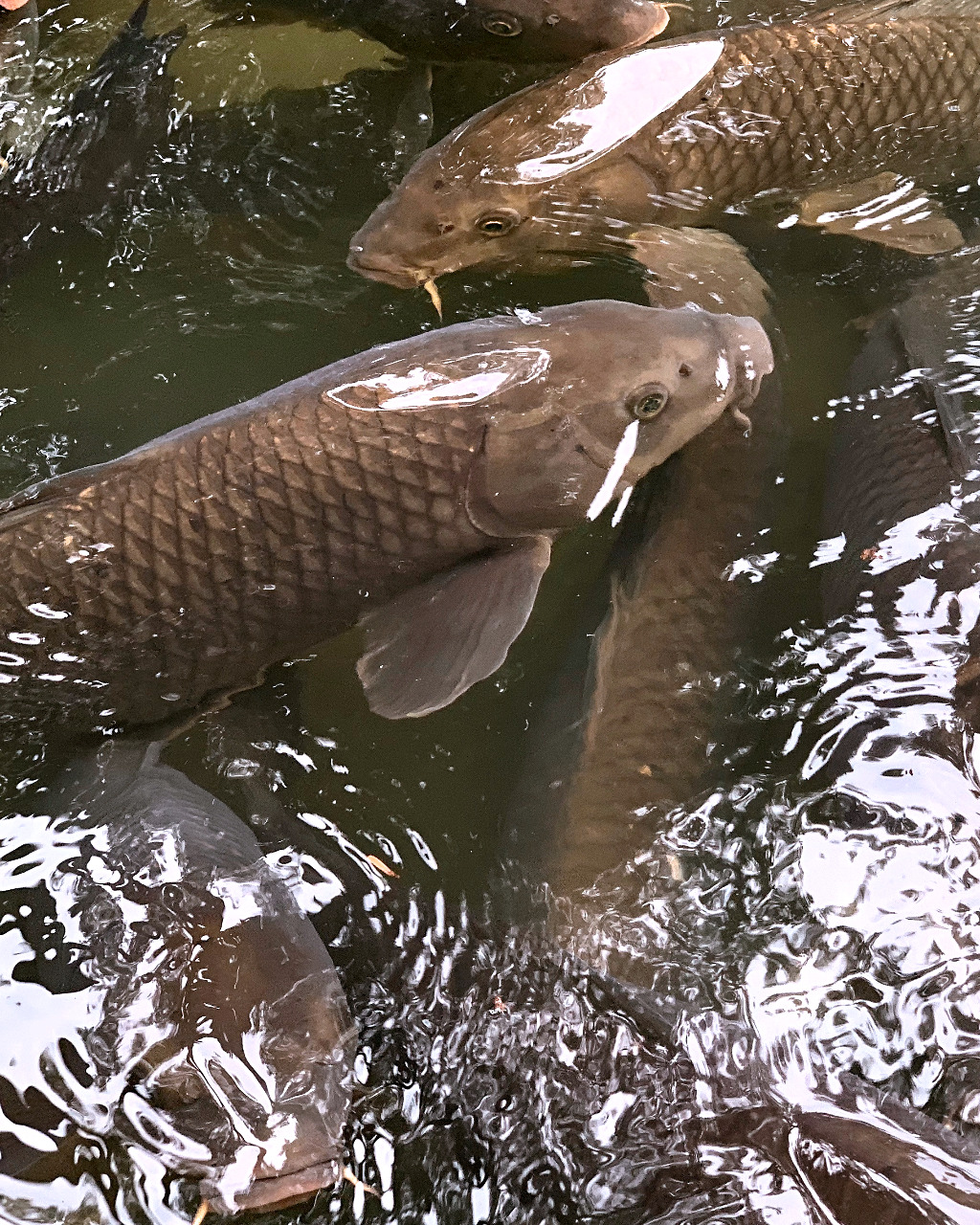
More nearby…
- The Prefectural Museum of Traditional Arts and Crafts
- The Museum Palace, Seisonkaku Villa
- Kanazawa Castle
- The Noh Theatre
- The History Museum and Kaga-Honda Samurai Museum
- The Prefectural Art Museum
Finally, if you are here during one of the many flowering seasons…
Kenrokuen has it’s own calendar of flowers that can be seen and enjoyed inside the garden. The most striking, of course, are the plum blossoms in later February and early March, followed swiftly by the cherry trees of late March and early April. There are even lusher “chrysanthemum cherries” in bloom if you’re too late to see the traditional yoshino cherries.
Kenrokuen Garden Park Information
FROM KANAME INN
700 meters (approx. 9 min. walk)
to the Mayumi-zaka Entrance
HOURS
March to mid-October:
7:00 – 18:00 (until 6:00 p.m.)
Mid-October to March:
8:00 – 17:00 (until 5:00 p.m.)
PRICE
¥320
Free to enter from sunrise to opening. (Please exit before opening hours.)
Free to enter during select holidays and seasonal evening light-up events.
DISCOUNT TICKET
Kenrokuen, plus one (1) additional select facility
¥500
MORE ABOUT…

About a decade ago Rachel fell off a bus and then fell in love with this traditional-crafts and ice-cream-consuming capital of Japan. Editor and amateur photographer with a penchant for nature and history. Not actually fifty songbirds in a trench coat. (Former penname: Ryann)

